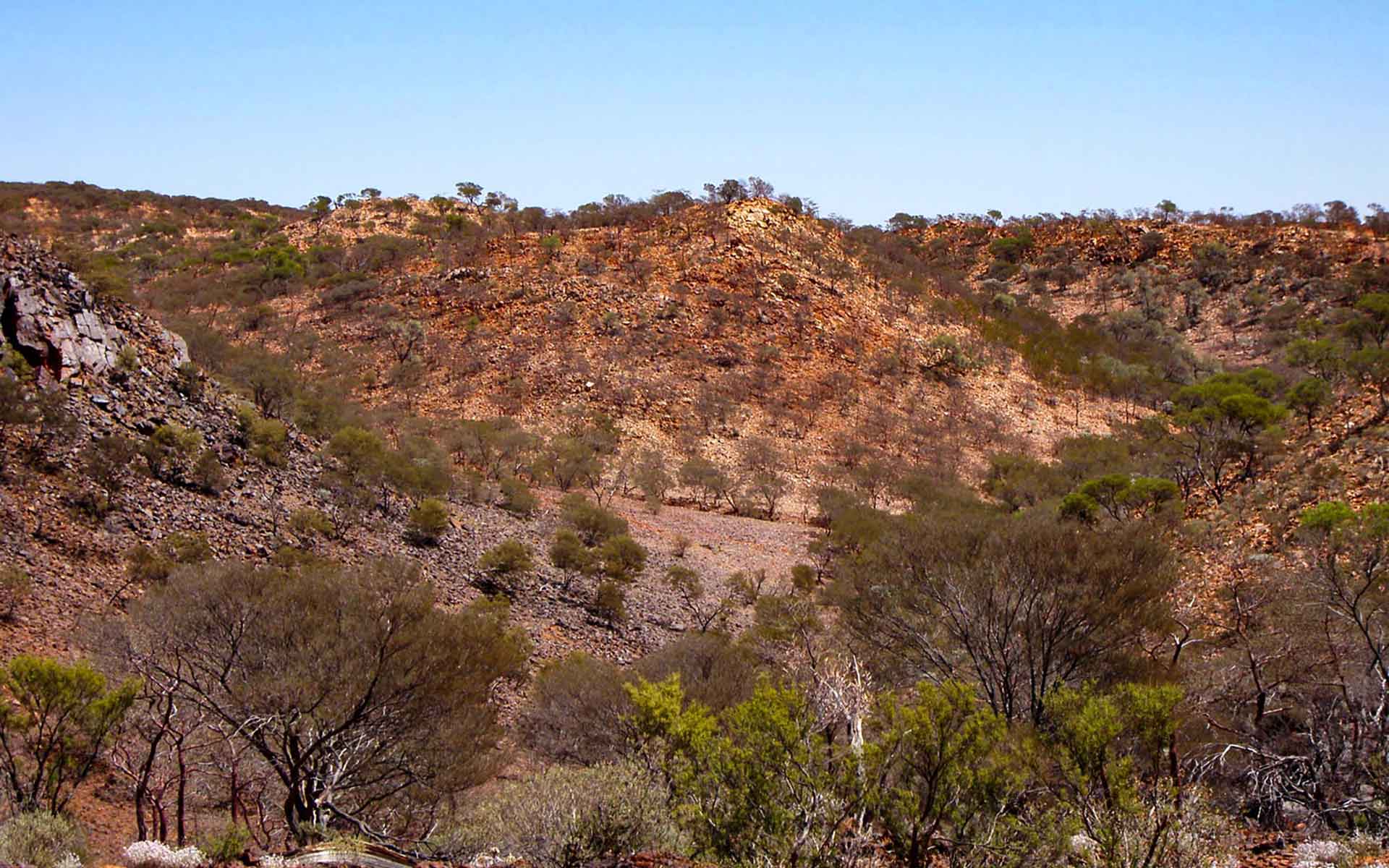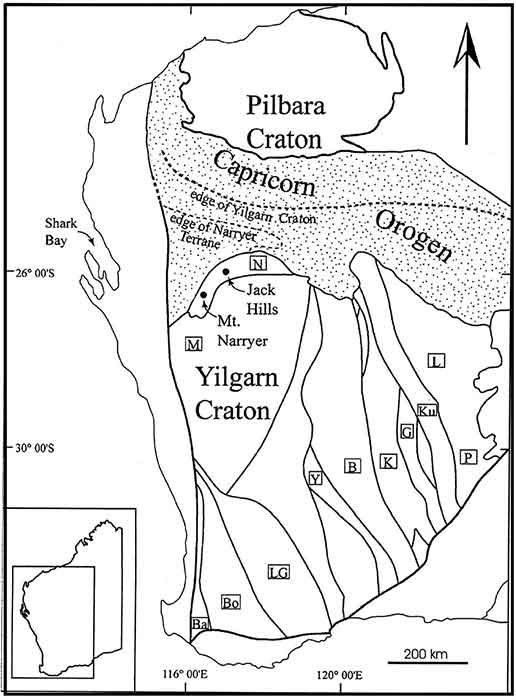
Erawondoo Hill, a resistant outcrop of Archaean sandstone and conglomerate.
Geological Period
Archaean (Hadean)
Main geological interest
Petrology
Geochronology
Location
Erawondoo Hill (Jack Hills) Murchison District, Western Australia.
26°10’58.0″S, 116°55’57.0″E
Erawondoo Hill, a resistant outcrop of Archaean sandstone and conglomerate.
Like a window into the origins of the Earth, it is host to detrital zircons with ages 4.4-4.0 ga preserving the oldest remnants of Earth’s primordal crust.
Erawondoo Hill is the largest in situ repository of the oldest terrestrial crystals known to exist on Earth. It is one of the world’s most important sites for ongoing research into the origin and evolution of the Earth. Using modern analogues, the sedimentary structures, grain sizes, and sequence of graded bedding and lithologies of the sandstone and conglomerate suggest the deposits formed in braided river environments and fan deltas. As such, they provide a unique and important window to the processes and landscape of the Earth’s surface in this part of the globe in very ancient times.
- Geological description
Erawondoo Hill, part of the Jack Hills Range, is located in the Murchison District of Western Australia. Geologically, it is in the northern part of the Yilgarn Craton in a structural/ metamorphic terrane known as the Narryer Terrane, a northeast-trending belt of folded and metamorphosed supracrustal rocks between 3.1-3.2 billion years old. The Jack Hills range is comprised of vertically-dipping Precambrian rocks and the detrital zircons over 4 billion years old occur within pebble conglomerates therein. Locally are interlayered sheets of massive sandstone and cross-bedded sandstone. Hard and heat-resistant, zircon is capable of persisting even after the primary features of the host or parent rock have been destroyed. These ancient zircon crystals provide the only geological evidence to provide insight into this time period. In fact, these zircons being older than the sedimentary rocks in which they occur represent rocks that no longer exist or can no longer be identified. The exact age of deposition of the pebble conglomerate in which the crystals are found is still unknown and is one of the unresolved questions surrounding this ancient fragment of Earth’s early crust in this part of Western Australia.
- Scientific research and tradition
The zircons from Erawondoo Hill have been important to science in that they have provided insights into early crustal evolution of the Earth. More detailed geochemical studies with technological advancements have provided further information on early Earth water, oxygen, rare Earth elements, Lithium, and other elements, and their relationship to crustal evolution.
- Reference
Reineck, H.E. and Singh, I.B. (1980) Depositional sedimentary environments. 2nd Edition. Berlin: Springer-Verlag.
Spaggiari, C.V. (2007) ‘The Jack Hills greenstone belt, Western Australia Part 1: Structural and tectonic evolution over >1.5 Ga’, Precambrian Research, (155), pp. 204–228.
Wilde, S.A. et al. (2001) ‘Evidence from detrital zircons for the existence of continental crust and oceans on the Earth 4.4 Gyr ago’, Letters to Nature, (409), pp. 175–178.
Wilde, S.A., Middleton, M.F. and Evans, B.J. (1996) ‘Terrane accretion in the southwestern Yilgarn Craton: evidence from a deep seismic crustal profile’, Precambrian Research, (78), pp. 179–196.
Wilde, S.A. and Pidgeon, R.T. (1990) ‘Geology of the Jack Hills Metasedimentary Rocks’, in Proceedings of the Third International Archaean Symposium. Ho, S.E., Glover, J.E., Myers, J.S., Muhling, J.R. Perth, WA: University of Western Australia (Excursion Guidebook), pp. 82–89.
- Author(s)
Margaret Brocx
Adjunct Professor of Research|College of Science, Health, Engineering and Education, Discipline Environmental and Conservation Sciences. Murdoch University, Western Australia, Australia
Vic Semeniuk
Adjunct Professor of Research|College of Science, Health, Engineering and Education, Discipline Environmental and Conservation Sciences. Murdoch University, Western Australia, Australia


